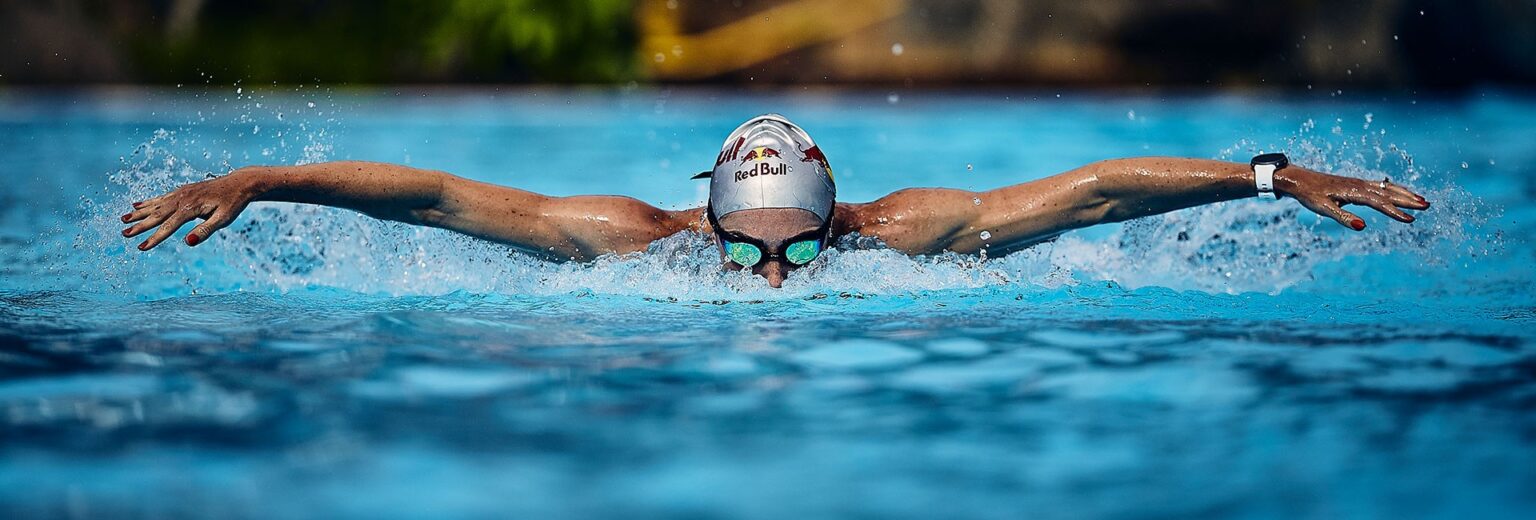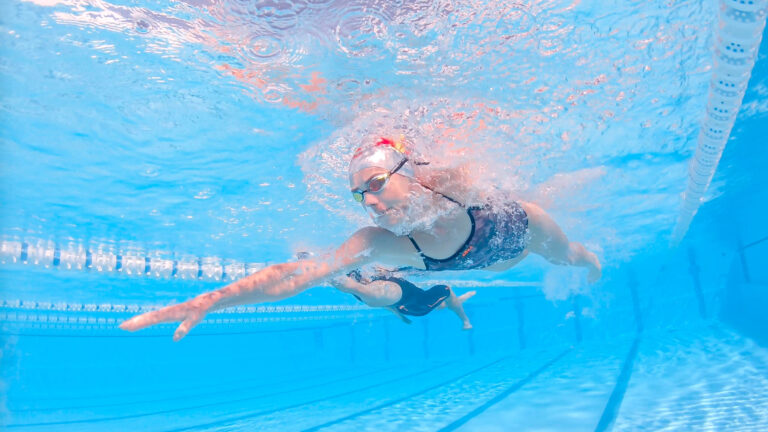
Triathlon Swimming can be complicated and you might be asking yourself “How do I stop my legs from sinking during freestyle?” Are you frustrated by not having the answer? By getting this right your going to transform your triathlon swim.
Your legs are made up of bone, muscle, some fat and some water. This makes them heavier than water and likely to sink given the chance. Sinking legs cause triathletes a lot of frustration and drag, as much as 80%. During the triathlon swimming this is going to slow you down a lot. So, it is a priority to stop the legs from sinking. How do you do that?
1. Triathlon Swim: Fix your kick
Triathletes are notorious for saving their legs in the swim by not kicking, but kicking will actually help with body position. Kicking will improve your core strength and tighten up the muscles that connect the upper and lower body. This tightening will lift your legs in the water. With practice and a lot of kicking under the belt, you will see a big improvement in your body position.
Kick from the hip with slightly bent knees while using a kickboard. Keep your heels above water, making a little bit of a splash while you’re kicking. Pull your core in. Kicking is pretty exhausting and the reason why many triathletes don’t do it. Make sure you do a kick set in every training to keep working on elevating the legs.
Stretch the hip flexors to help you kick and lie flat in the water. A tight hip flexor will contribute to the legs sinking as the angle at the hip will be less than the desired 180˚. Tight hips mean that the legs aren’t able to straighten out and even though kicking helps, you will need extra help.min
2. Triathlon Swim: Exhale underwater
Your lungs are like a balloon filled with air. Because of this you are unbalanced in the water and your legs want to sink. Releasing some air from the lungs by breathing out underwater will help keep the legs in a straight line. Don’t exhale all your air as your whole body will sink and create a lot of drag. Blow out about 10-25% of the air in your lungs while your face is back in the water after breathing. How do you know how much that is? Singing the first lines of your favourite song. Singing or humming while breathing out underwater will help you not breathe out too much at once.
Exhaling will eliminate some of the positive buoyancy from the lungs. By doing this your chest will drop slightly in the water. You will feel as if you are falling forward. Breathing out underwater is a great technique for freestyle, by doing this you will be lying nice and flat in the water and the feet will be better in position.

3. Triathlon Swim: Watch your head position
Lift your head and your legs will sink. The head is attached to the spine and the moment we lift the head, there is pressure on the spine downwards. Not being anchored, the legs drop accordingly.
Triathletes need to occasionally lift their head to sight in during a race but being able to immediately find your position again is crucial to a successful swim.
Keep your head pointing down, with the neck remaining relaxed and long. You want the crown of your head to be breaking the water surface and this is a great head position. If you can see the oncoming wall, then your head is lifted too high and your legs will be lower in the water as a result. This breathing technique will help keep the head still and avoid any unnecessary movement upwards.
You might be getting the idea that breathing has a lot to do with sinking legs. Simply put, get your breathing right and you are well on your way to solving the sinking legs puzzle.
Fixing the leg sink is really important in triathlon swimming. It reduces drag and will make you quicker straight off the bat. A perfect reason to get after it today. Keep kicking, breathe out underwater and head down are our main takeaways.
Want to Improve your triathlon swim?
We have the answer! Take a look at our online triathlon swim course by Pro Triathlete and Kona Swim course record holder Lucy Charles-Barclay. Over the course of 18 instructional videos Lucy Charles and Reece Barclay talk about the keys to successful triathlon swimming, how to prepare for any triathlon race, developing a stroke like a pro and ultimately how to become a faster swimmer.
